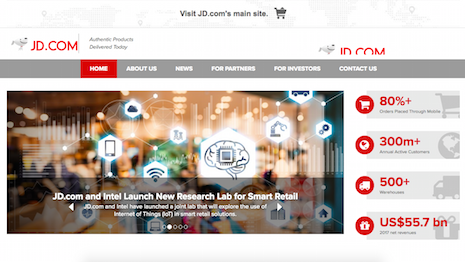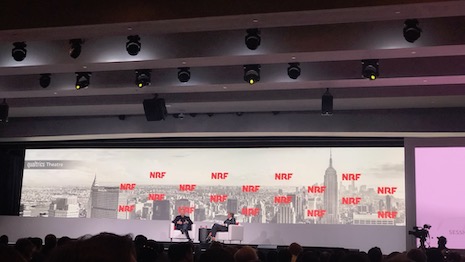 JD.com is leveraging services such as white glove delivery to attract more high-end brands. Image credit: JD.com
JD.com is leveraging services such as white glove delivery to attract more high-end brands. Image credit: JD.com
NEW YORK – As the appetite for luxury goods continues to grow among Chinese consumers, ecommerce brands are setting expectations for future retail experiences around the world.
Speaking at the National Retail Federation’s Big Show on Jan. 15, executives from JD.com and Deloitte discussed the evolution of China’s retail environment and how the country’s luxury business has grown. From the popularity of social media platforms such as WeChat to China's embrace of cashless transactions, its shoppers help provide a look at upcoming retail trends.
“So many consumers in China [gained] access overnight,” said Harlan Bratcher, global business development head of JD Fashion at JD.com. “People are more exposed to brands.”
Service and logistics
With more than 700 million total Internet users in China, the market potential for online retail outpaces the total population in the United States, according to Rod Sides, vice chairman and U.S. leader of retail, wholesale and distribution practice at Deloitte.
China has leapfrogged ahead of other economies in terms of technology, making today’s technology in the U.S. and Europe outdated in the East.
JD.com's online platform
To be competitive, JD.com has become one of the most innovative ecommerce platforms in China despite its origins as an offline retailer.
Tight delivery timetables are essential to both the company and its customers.
“If you order your package before 11 a.m., you get it delivered by 11 p.m. that night,” JD.com's Mr. Bratcher said. “If you order after 11 a.m., you get it by 11 a.m. the next day.”
This timeline is accurate up to 90 percent of the time, according to Mr. Bratcher.
To help fulfill this commitment to customers, the retail giant is the only company licensed to distribute orders by drone and operates more than 100 drone bases throughout China. Autonomous vehicles also deliver on behalf of JD.com.
The delivery experience is further elevated for luxury purchases.
In top-tier cities, JD.com can deliver goods in less than two hours. For a ceremonial touch, delivery people are uniformed, including white gloves, and arrive driving black electric cars (see story).
Harlan Bratcher of JD.com and Deloitte's Rod Sides at NRF 2019
“The notion of giving the customer what they want, when and where they want it — that’s the new market,” Mr. Bratcher said.
In addition to streamlining logistics, JD.com is also working to combat counterfeit products.
“Chinese consumers want the real thing,” Mr. Bratcher said. “They’re weaponized in terms of social media, and know and want the real thing.”
Ecommerce gains
The Chinese ecommerce market presents an invaluable opportunity for JD.com and other online platforms.
Chinese ecommerce sales have surpassed $1 trillion for the first time, with no signs of sales or growth slowing down for the world's largest digital retail market.
The Chinese ecommerce market must be of increasing importance to luxury retailers as it continues to pull away from the United States in terms of value. According to Digital Commerce 360, in 2017 online purchases by Chinese consumers reached $1.12 trillion, or 7.18 trillion yuan at current exchange, a 32 percent jump from 2016's $869 billion in sales.
JD.com and its rival ecommerce giant Alibaba account for more than 85 percent of all online sales in China (see story).
The ecommerce platform is also looking to further position itself as the go-to platform for high-end brands, seeking to attract more premium companies as partners.
In the second quarter of 2018, brands including Carl F. Bucherer and Balenciaga made their debuts on JD.com, adding to the retailer’s portfolio of luxury brands. JD.com’s $18.5 billion in second quarter revenues fell short of expectations, but still reflected a growth of 31.2 percent (see story).
“We aren’t disrupting the retail business,” Mr. Bratcher said. “In fact, we want to share all of our technology with others.”


